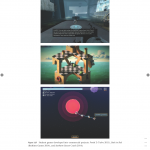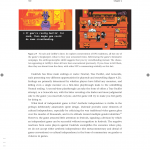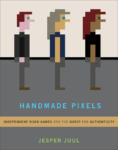 I was waiting for the pandemic to blow over before thinking about time management again, but it looks like there will be no simple global endpoint, so here goes. I hope this is useful for other potential writers.
I was waiting for the pandemic to blow over before thinking about time management again, but it looks like there will be no simple global endpoint, so here goes. I hope this is useful for other potential writers.
How long does it take to write a book? I must confess I had no idea, but writing Handmade Pixels took me 1000 hours over the course of 4½ years. I had already written a paper on independent games in 2014, but it wasn’t until August 2015 that I decided to write the book that became Handmade Pixels.
Associate professor jobs like mine with dedicated research time are unfathomably privileged and increasingly scarce, yet even people like me will complain of not having time to do research. I use a time tracker to figure out where my time goes, and this lets me see how much time I spent on this book. It’s not an exact science – sometimes I’d work on something else that drifted into the project, and sometimes I’d be interrupted while working.
Results: I clocked a total of 983 hours which were distributed like this (click to zoom): As you can see, only 2/3 of the time was spent in the earnest book-writing phase – after signing a contract and before publishing. Especially copyediting, proofs, and promotion took much more time than you’d intuitively expect.
As you can see, only 2/3 of the time was spent in the earnest book-writing phase – after signing a contract and before publishing. Especially copyediting, proofs, and promotion took much more time than you’d intuitively expect.
To my surprise, most of the time I only just managed to work on the book around 20-30 hours a month. My contract technically says that I can (should/should be able to) research 60 hours per month, but I only exceeded that twice. For most months, there were apparently always enough other things happening for me to spend that much time on the book.
This is also the largest book project I’ve done, and I surely couldn’t have done it without my assistant Dooley Murphy, or without the good support of MIT Press and my editor Doug Sery.
Finding the time
I was positively unsure if I could write this book on my regular work schedule. My first three books were all written on considerable chunks of free time (Half-Real: my PhD, A Casual Revolution: 6 months off, Art of Failure: a 6-month grant), so could I even write a book during my regular schedule of teaching, meeting, supervising, and being the head of an educational program? I also have kids, and my productivity drops vertically if I am sleep-deprived, so working late does not make me more productive.
After a million days of never getting to the research I cared about, I’ve settled on the classic writer routine:
- Go to the office.
- Get a cup of coffee.
- Write till noon without checking email or social media.
- Let the world of emails and meetings wash over me.
This was the best choice imaginable. Of course, it wasn’t always possible to evade other responsibilities in the morning – there were lots of days where I failed – but it at least felt like a pattern, and let me get a continuity of working on the project almost every workday. I probably did around 10 late nights for the entire project, and none after midnight. Not because I didn’t have to, but simply because staying up late would make me miserable without speeding up the project at all.
Motivation
Some people have asked me how I find the motivation to not go on social media or do other short-term tasks when I am supposed to write, and I am not always successful at that. I do find it useful though to think very hard about how a given activity makes me feel: if I randomly go on social media or check email, it makes me feel terrible & life feel meaningless, while starting my day with research makes me feel great and my life feel meaningful. (There is a good podcast on thinking about “how does it make you feel“.) It’s a bit like the idea of getting drunk on champagne in the morning – on some level it sounds great, but in practice you know it will feel terrible. So you try to do the thing that will make you feel better.
Structure
Writing is often very solitary, so habits are very idiosyncratic. I personally don’t have daily goals like word counts, but I have very long TODO lists, describing things I need to read, games I need to play, screenshots I need to take, interviews I need to edit, paragraphs that need to be linked, arguments that need to be sharpened, and so on. For a writing session, I just want to check off some checkboxes. I keep the list of checked tasks around so I can see my progress. I also make new tasks just to check them.
Fast or slow?
Is 1000 hours fast or slow? I really have no idea. I am probably somewhere in the middle. I know of writers faster than me, and writers who take more time than I do.
This is what I learned from writing Handmade Pixels. If you want to write, I hope there will be time for you to do so as well.

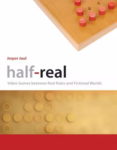
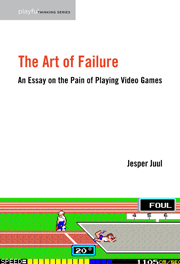

 We’ve discussed immersion (for and against), but I argue that we’ve overlooked a much more fundamental question: Why and when do we think of pixels on the screen as objects, rather than as pictures of objects?
We’ve discussed immersion (for and against), but I argue that we’ve overlooked a much more fundamental question: Why and when do we think of pixels on the screen as objects, rather than as pictures of objects?